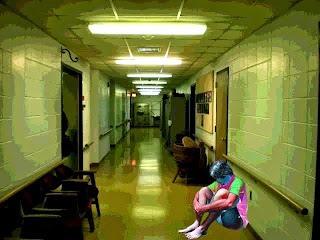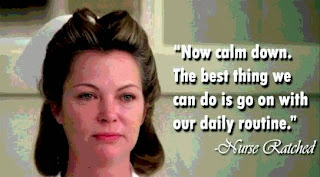The
several conversations I had with the Art Therapist at Worcester State
Hospital marked an end to my period of drift and pointed in a new
direction. I discovered by chance something that interested me enough
to consider going to graduate school. The combination of working in a
psychiatric environment and becoming acquainted with the field of Art
Therapy as a non-analytic therapeutic process that seemed ideally
adaptable to troubled children encouraged me to look into graduate
programs for educating and certifying special needs teachers in the
area of emotional disturbance in school age children.
As
I had done years earlier working full time at a printing company and
taking evening classes at a junior college, while working full time
at the State Hospital, in 1970 I enrolled in the graduate program at
Fitchburg State College in the town where I was born. I attended
classes in the evening continuing education program for a Masters
Degree in Special Needs Education focusing on what was labeled
“emotionally disturbed” children in those days. That designation
may no longer be considered politically correct; it seems to be
termed “social/emotional disabilities” nowadays.
I
had the great good fortune to meet a very special teacher by the name
of Eleanor McKuen who was also studying for her Masters Degree in the
evening program. She was already a special needs teacher working in
the Worcester Public School System, and had a class for emotionally
disturbed children in one of the city's neighborhood schools. She was
a fountain of information and insights into education in this area
and invited me to visit her class to see for myself firsthand whether
it would really suit me or not.
| holding my newborn niece and my "Little Brother" Lance |
I took her up on the invitation and spent a day in her classroom and
quickly realized how suited she was to the job. She made me feel
welcome and communicated that welcome to the eight kids in the class
who reciprocated it. I wondered if I had the character and patience
to do as wonderful a job as she did. I suppose I was a little in
love with her. I was also in a relationship with someone else at the
hospital that seemed to be taking a serious turn, but that's another
story.
I
was much impressed with Eleanor and her class and decided to pursue my
diploma. I also joined a “Big Brother” program in Worcester and
worked with one of Eleanor's boys named Lance who was in foster care
in a group home in the city.
In
due course I had to come up with an idea for the Masters Thesis and
conceived of the idea of doing research and an experiment in art
therapy in a classroom for emotionally disturbed children. I
consulted the Art Therapist at the hospital and discussed the
feasibility of such a thesis and whether he would be willing to help
me. He was most enthusiastic and offered what help he could. Then I
discussed the idea with Eleanor and asked her if I could work with her
students for the experimental part of the thesis. She was also
supportive and excited by the idea.
Now,
all I had to do was convince the department head at the college.
To
be continued...














